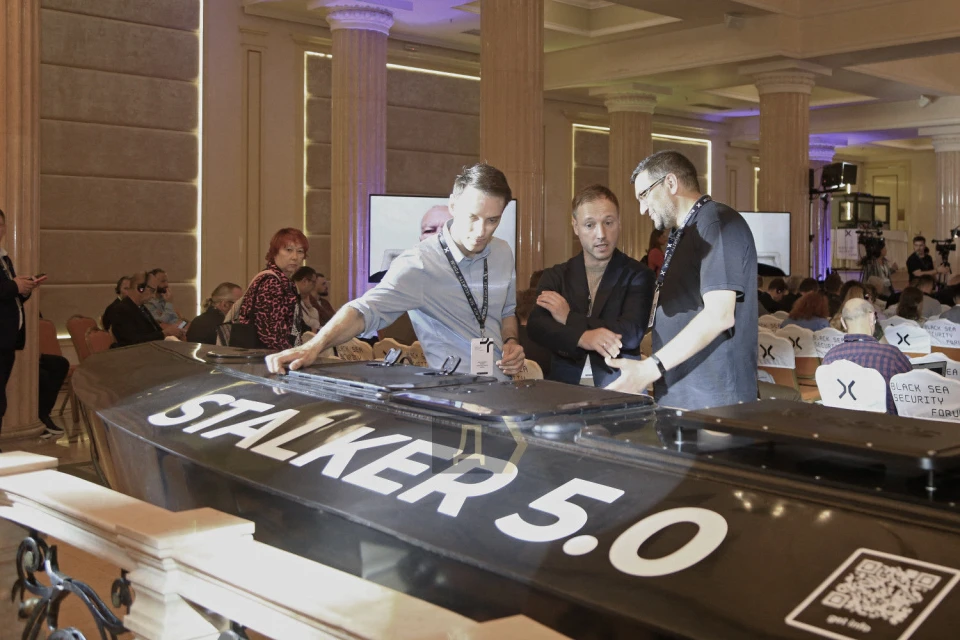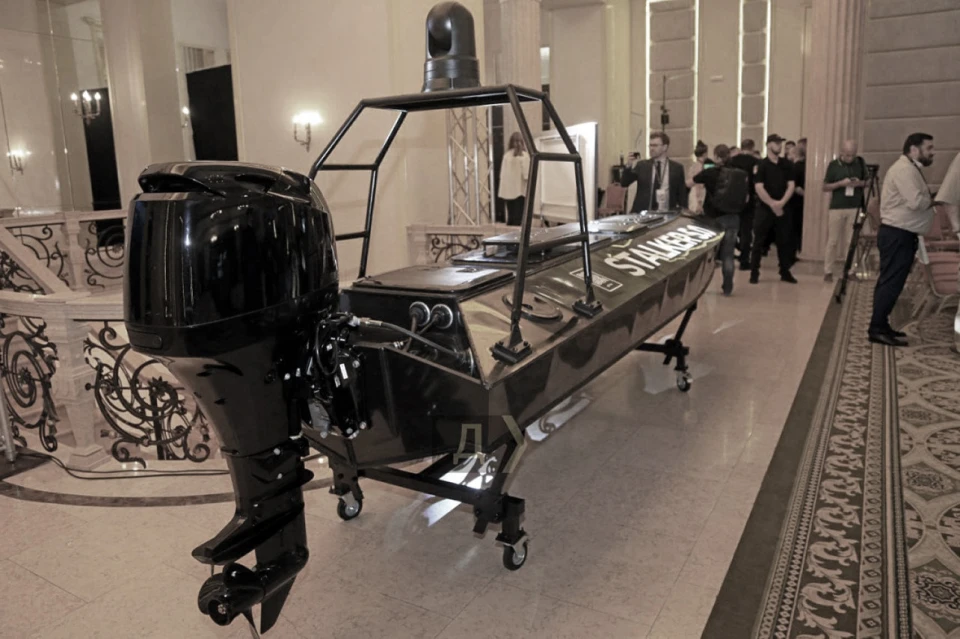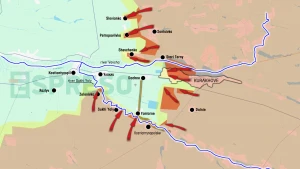
Helps in Crimea: The Stalker 5.0 maritime drone, how it differs from other UAVs and why it is called a "truck"
Russia's full-scale aggression has given Ukraine an impetus in the field of home-grown drone production. Unmanned surface vehicles such as Sea Baby, Magura or Mamai have all featured in reports of successful combat experience. In June, another Ukrainian drone called Stalker 5.0 was unveiled
Contents
1. Stalker 5.0 maritime drone: origins and capabilities
2. Technical characteristics of the Stalker drone
3. Stalker 5.0: cost-effective alternative to NATO drones
4. Stalker 5.0 as a drone truck
5. "Mosquito fleet": there should be many drones like the Stalker
Stalker 5.0 maritime drone: origins and capabilities
The new drone was presented on 16 June 2024 to the participants of the Black Sea Security Forum 2024 in Odesa.
The name comes from the English word "stalk" - to sneak up on. According to a correspondent of the local outlet Dumskaya, the 5-metre-long unmanned boat attracted a lot of attention from visitors.
The presentation of Ukraine's new Stalker 5.0 maritime drone showed that Ukraine is increasing its capabilities in developing new defence equipment, not just in manufacturing the existing ones, Valeriy Ryabykh, a military expert and development director of the information and consulting company Defense Express, said on Espreso TV channel.
"Ukraine is developing new weapons. Obviously, this drone is likely to have been manufactured by some other company, not the one that produces Sea Baby or Magura V5 drones. If we talk about the characteristics presented, they may be close to those of the drones that are currently in use," the military expert said.

Photo: Dumskaya
The mounted petrol engine has a power output of 60 horsepower and is capable of accelerating the UAV to a speed of over 40 knots (approx. 75 km/h). The declared cruising speed is 55 km/h.The maritime drone is equipped with a Starlink-based video communication and control system. It can be used for reconnaissance and coastal patrol in sea and river border areas. A payload of up to 150 kg makes the boat a pretty decent "kamikaze" drone. However, the main function is called logistics - the delivery of necessary cargo by sea to military units.
"A special compartment in the hull can be used to deliver water, food, military equipment and other cargo to islands or coastal areas where the Ukrainian Defence Forces are located," Espreso explained.
Technical characteristics of the Stalker drone
- Length - 5 m,
- Width - 1.2 m,
- Weight of the warhead - up to 150 kg,
- Cruising speed - 55 km/h,
- Maximum speed - 75 km/h,
- Operational range - 600 km,
- Cost - EUR 60,000.
Stalker 5.0: cost-effective alternative to NATO drones

Photo: Dumskaya
Ukraine's newest Stalker is essentially a copy of the NATO-standard UAV, said Pavlo Narozhnyi, founder of the charity organisation Jet Mail."This is an unmanned platform, essentially a copy of NATO models. NATO countries have about three or four such models, which are primarily not intended for striking, but for reconnaissance, observation, cargo delivery, and possibly the deployment of some sabotage groups," the military expert explained.
He also emphasized that an important distinction of the Ukrainian drone is its price.
"We have a simplified and cheaper version. Because our war is making adjustments, we have completely different budgets than NATO countries," Narozhnyi said.
Roman Svitan, a colonel with the Ukrainian Armed Forces, said that the engine helped to reduce the price of the Stalker.
"The Stalker 5.0 is a cheap drone in the sense that it uses a hinged engine that can take it to a certain range, but not a long one," the expert said.
Stalker 5.0 as a drone truck
Most observers agree that although the developers have provided a "kamikaze" function for the Stalker, it will not be the main feature of this UAV. After all, the warhead of the Stalker 5.0 weighs 150 kg, while other Ukrainian maritime drones weigh up to 1,000 kg with a range of 800-1,000 km.
"The warhead is only 150 kilograms. This is not enough to cause a serious damage. If we are talking about a target like the Sergei Kotov (a 94-metre-long Russian corvette sunk in March 2024 - ed.), the Stalker 5.0 could damage the ship, but not eliminate it. A real warhead must be half a tonne or more to sink or seriously damage enemy ships. If it is less than half a tonne, it is very problematic to do so," said Roman Svitan.
Another military expert, Valeriy Ryabykh, also believes that the Stalkers do not need to duplicate the functions of the previously developed unmanned "kamikaze" drones.
The Stalker 5.0 drone can be used to deliver the necessary ammunition, supplies to supply troops or units engaged in combat operations at sea or river. This is very important now, in particular, given the holding of a number of bridgeheads in the Dnipro River basin, in Krynky, for instance. This can significantly improve the logistics of Ukrainian troops, their capabilities on the opposite bank, which Russian troops are trying to control," Ryabykh said on Espreso TV channel.
Roman Svitan also emphasises the logistical function of the new drone. The Stalker 5.0 can be used as a strike drone, but the best option is to use it for cargo transportation, the expert says.
"The main task of this drone is delivery. It's like a truck, a transporter. Its task is to deliver ammunition to our naval landing force, which is located, let's say, on the islands, on the left bank of the Kherson region, during the landing in Crimea. In addition, a lot of ammunition needs to be transferred to the Left Bank, to the islands, or when we enter Crimea. This is a shuttle type of drone - it goes up, unloads, and comes back down. It is designed for these tasks - to support the troops," Svitan said.
"Mosquito fleet": there should be many drones like the Stalker
Experts call the price of EUR 60,000 very reasonable. In particular, compared to other Ukrainian unmanned surface vehicles.
"For the price of one Magura, you can make five Stalkers. This UAV is a serious reinforcement. In addition, it is better for us to have more drones that are cheap, but in large numbers. We need to create a so-called 'mosquito' fleet," explained Roman Svitan.
He says that stopping a large number of inexpensive unmanned boats will be an impossible task for the Russian forces.
"Russians use anti-drone defence. And while they are chasing a few of them, some of the drones will be able to get through and perform a combat mission. That's why we need a lot of drones. Stalker needs to be put into industrial production," the military expert stressed.
He calls the creation of Stalker 5.0 a serious and long-awaited step, and emphasises that, in his opinion, it was with these drones that "we had to start with".
"This is a long-awaited mechanism that will operate at short distances. It will greatly help our troops," Svitan said.
- News












































